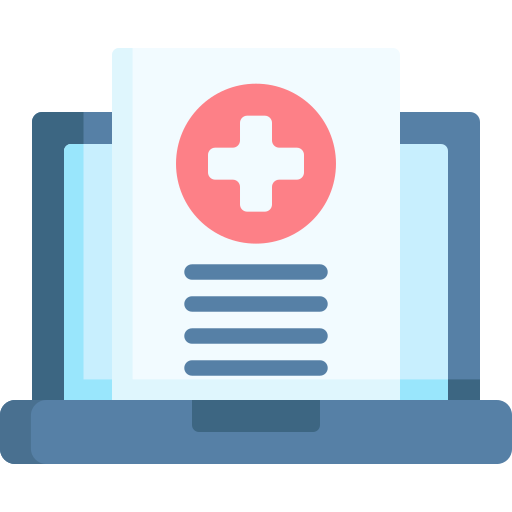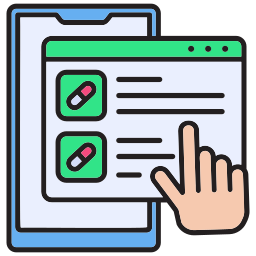A health system can use an EHR like Epic in several ways based on its unique needs and available resources. Some healthcare providers choose a more progressive approach, adopting the system in stages to guarantee a seamless transition and avoid interruptions. Others choose speedy implementation to reap the new system's benefits as quickly as possible. Good Epic onboarding and extensive training are critical for successful EHR adoption and implementation, regardless of the selected speed.
Epic has a 7.17% US market share compared to its competitors. Known for its robust EHR systems, Epic offers comprehensive solutions that streamline patient care, enhance data accuracy, and improve healthcare efficiency. Its interoperability features facilitate seamless data exchange across various healthcare systems, ensuring better care coordination and patient outcomes.
Proper Epic onboarding ensures that all employees know the system's capabilities and functions, resulting in increased productivity, accuracy, and overall patient care.
How Epic Onboarding Works
Epic onboarding involves a detailed and structured process to ensure healthcare organizations successfully implement and utilize the Epic EHR system.
Here’s how it works; we have broken it down into six key steps:
1️⃣ Initial Assessment and Planning
Epic onboarding starts with assessing the healthcare organization’s current systems, workflows, and specific needs. It helps create a customized implementation plan that addresses the organization’s unique requirements, ensuring a smooth transition to the new EHR system.
2️⃣ System Configuration
The next step involves configuring the Epic system to match the organization’s workflows. It includes setting up user roles, permissions, and specific features needed by different departments. The proper configuration ensures the system is tailored to the organization’s operational needs, promoting efficiency and ease of use.
3️⃣ Data Migration
Transferring existing patient data from legacy systems to Epic is a critical part of the onboarding process. It involves data extraction, cleansing, and loading into the new system. Ensuring accurate and complete data migration minimizes disruptions and maintains the integrity of patient records.
4️⃣ Detailed Training
Training is an essential component of Epic onboarding. Healthcare staff, including clinicians, administrative personnel, and IT support staff, undergo extensive training sessions to familiarize themselves with the new system. Effective training ensures that users are confident and proficient in Epic, vital for successful adoption.
5️⃣ Integration with Existing Systems
Epic onboarding includes integrating the new EHR with existing healthcare systems, such as lab, radiology, and pharmacy. This ensures seamless data flow and interoperability between systems, enhancing overall operational efficiency and improving patient care coordination.
6️⃣ Go-Live Support and Optimization
The final step in Epic onboarding is the go-live phase, where the system is officially launched. During this period, dedicated support teams assist with any issues or adjustments. Post-launch, continuous monitoring and optimization help to refine the system based on user feedback and evolving needs, ensuring long-term success.
By following these steps, Epic onboarding provides a structured and efficient approach to implementing the Epic EHR system, ultimately improving healthcare delivery and operational efficiency.
Common Challenges Faced During Epic Onboarding
Epic onboarding is important for healthcare organizations transitioning to the Epic EHR system. However, this process poses several challenges that are addressed for a successful implementation. Here are five common challenges in Epic onboarding:

❗Identifying Potential Hurdles
One of the first challenges in Epic onboarding is identifying potential hurdles that may arise during the process. These can include staff resistance to change, compatibility issues with existing systems, and data migration complexities. Anticipating these challenges early on allows for proactive planning and mitigation strategies, ensuring a smoother onboarding experience.
❗Training and Adoption
Training staff to use the new Epic system effectively is a significant challenge. Inadequate training can lead to user frustration and errors, impacting patient care. Ensuring comprehensive and continuous training sessions designed for different user roles helps build confidence and competence among staff, promoting better adoption and utilization of the Epic system.
❗Data Migration Issues
Migrating data from legacy systems to Epic is often fraught with challenges. Data accuracy, completeness, and integrity during the transfer process are critical. Real-world examples include mismatched data fields and incomplete data sets that can disrupt operations. Addressing these issues with thorough data validation and testing procedures helps maintain the quality of patient records.
❗Integration with Existing Systems
Integrating Epic with other healthcare systems, such as labs, radiology, and billing, can be complex. Compatibility issues and ensuring seamless data exchange are common hurdles. Real-world examples include integration failures leading to data silos and inefficiencies. Robust integration planning and testing are essential to achieving interoperability and smooth data flow across systems.
❗Managing Change and Expectations
Another challenge in Epic onboarding is managing change and aligning expectations among stakeholders. Resistance from staff, unrealistic timelines, and budget constraints can hinder the process. Effective change management strategies, clear communication, and realistic goals help manage expectations and ensure a collaborative approach to successful Epic onboarding.
Understanding and addressing these common challenges in Epic onboarding is vital for a smooth and effective transition to the new EHR system. By proactively identifying and mitigating these hurdles, healthcare organizations can enhance their chances of a successful Epic implementation, ultimately improving patient care and operational efficiency.
What are the 5 Stages of the Onboarding Process?
Epic onboarding is an important process for healthcare organizations adopting the Epic EHR system. Implementing effective strategies is essential to streamlining this process and ensuring a smooth transition.

Here are five strategies for efficient Epic onboarding:
✅ Assessment and Planning
- Evaluate current systems and workflows.
- Identify goals and objectives for Epic EHR implementation.
- Develop a detailed project plan and timeline.
✅ System Design and Configuration
- Customize Epic EHR to meet specific organizational needs.
- Define user roles, access levels, and data workflows.
- Integrate existing data and systems with Epic EHR.
✅ Training and Education
- Provide comprehensive training for all users.
- Utilize simulation labs and hands-on practice sessions.
- Offer ongoing support and resources for continuous learning.
✅ Testing and Validation
- Conduct rigorous testing of the system configurations.
- Validate data integrity and system performance.
- Address any issues or discrepancies before going live.
✅ Go-Live and Support
- Transition from the old system to Epic EHR.
- Provide on-site support and troubleshooting during the initial launch.
- Monitor system performance and user feedback for continuous improvement.
Incorporating these strategies into your Epic onboarding process can significantly streamline the transition and ensure a successful implementation. By focusing on training, project management, data migration, stakeholder engagement, and change management, healthcare organizations can achieve efficient onboarding, ultimately improving patient care and operational efficiency.
Related read - Benefits and Challenges of The Electronic Health Record

We Are Now A Part of Epic Vendor Program
We are proud to announce that Mindbowser is part of the Epic Vendor Program, a testament to our commitment to delivering top-tier services that align with Epic's high standards.
By partnering with a member of Epic Vendor Program like Mindbowser, you can unlock a host of benefits designed to streamline your integration with Epic systems and accelerate your go-to-market success.
Benefits of Epic Approved Vendors:
✅ Seamless Integration with Epic’s EHR System
✅ Exclusive Access to Private Services
✅ Accelerated Go-to-Market
✅ Documentation & Material Preparation
✅ Ongoing Support & Maintenance
The Role of Epic Training and Support
During Epic onboarding, training and assistance ensure staff members can use the EHR system efficiently. It's essential for optimizing productivity and understanding processes. Continuous learning is supported via online modules and manuals, among other ongoing support tools. These initiatives give employees the confidence to confidently handle complexity and provide the best possible patient care.
Importance of Staff Training:
- Skill Development: Proper training ensures healthcare staff can effectively use Epic's features for patient care.
- Efficiency: Trained staff can navigate Epic efficiently, reducing errors and improving workflow.
- Adaptability: Training prepares staff to adapt to updates and new functionalities in Epic seamlessly.
Resources Available for Ongoing Support:
- 24/7 Helpdesk: Immediate assistance for troubleshooting and queries.
- Online Knowledge Base: Access to extensive resources and guides for self-learning.
- User Groups: Forums and communities for sharing experiences and learning from peers.
Measuring Success Post-Onboarding:
Tracking key performance indicators (KPIs) is essential for assessing the effectiveness of Epic onboarding. Metrics such as user adoption rates, workflow efficiencies, and error reduction rates provide insights into system integration. Regular feedback loops and surveys gather user experiences, guiding continuous improvement efforts. Evaluating these metrics ensures that the onboarding process meets its objectives and enhances healthcare delivery.
How Mindbowser Can Simplify Epic Onboarding
Mindbowser streamlines Epic onboarding, ensuring a smooth transition to this powerful EHR system. Our team of experts guides healthcare providers through the entire process, from planning to implementation, reducing the burden on internal IT teams.
Mindbowser is officially part of the Epic Approved Vendor Services Program, which means you can trust that our services meet Epic’s high standards for quality and compatibility.
Our team is equipped to provide all the necessary support, including Epic Hyperdrive testing whenever required, ensuring smooth and efficient operation. Access private services, including interoperability requests for read and write operations.
With our assistance, healthcare providers can achieve efficient Epic onboarding, improving operational efficiency and patient outcomes.
- What is Epic onboarding?
Epic onboarding refers to implementing and integrating Epic’s electronic health record (EHR) system within a healthcare organization. This involves configuring the software, training staff, and ensuring the system meets the organization's needs.
- Why is Epic onboarding important for healthcare providers?
Epic onboarding is crucial because it ensures a smooth transition to the new EHR system. Proper onboarding helps staff understand how to use the system effectively, leading to improved patient care, streamlined operations, and better data management.
- What are the common challenges faced during Epic onboarding?
Common challenges include staff resistance to change, data migration issues, technical integration with existing systems, and ensuring adequate training. Addressing these challenges is essential for a successful onboarding process.
- What are the benefits of efficient Epic onboarding?
Efficient Epic onboarding leads to better patient care through improved data accessibility and accuracy. It also enhances operational efficiency by streamlining workflows, reducing paperwork, and minimizing errors. Ultimately, it contributes to higher staff satisfaction and patient outcomes.
- How can Mindbowser assist with Epic onboarding?
Mindbowser is officially part of the Epic Approved Vendor Services Program. It can help simplify Epic onboarding by providing expert guidance, customized training programs, and ongoing support. With extensive experience in healthcare IT, Mindbowser ensures a smooth transition to Epic and effectively addresses technical and operational challenges.

Pravin Uttarwar, CTO of Mindbowser
As the CTO of Mindbowser, a healthcare-focused software development company, I am dedicated to delivering cutting-edge digital solutions that transform patient care and operational efficiency. With over 16 years of experience and as an MIT alumnus, I specialize in healthcare interoperability, FHIR-compliant systems, and AI-powered platforms, crafting scalable products and architectures tailored to the unique needs of healthcare providers and enterprises.
I have spearheaded the development of over 100 products and platforms, guiding them from concept to full-fledged solutions. My expertise extends to scaling remote tech teams, driving EHR integrations, and building secure, cloud-native healthcare solutions. By shaping technology visions and roadmaps, I help clients achieve long-term growth and success in the rapidly evolving healthcare landscape.
HealthConnect CoPilot enabled us to access real-time patient health data through integration with Apple HealthKit, enhancing care delivery while maintaining HIPAA compliance. This led to personalized care and improved outcomes for patients.

AI-enhanced Obstetrics Clinical Decision Support Platform
HealthConnect CoPilot's integration with Epic's Hyperspace has transformed our workflow. Automated post-delivery examinations and HL7 protocol use ensure accurate updates to Epic. Their expertise empowers informed decision-making in childbirth

Top Provider for Customized Healthcare Solutions
HealthConnect CoPilot's helped us to integrate with leading tracking devices such as Apple Watches and Fitbit. This integration enables effortless syncing of health data, providing users with real-time insights displayed directly on our flagship products: smart mirrors and digital calendars.

A Provider of Customizable Display Solutions
Post a comment Cancel reply
Related Posts
Why Building Your Own EHR Integration Engine Is Smarter Than You Think?
Getting into the U.S. healthcare market means dealing with EHR integration early on. For SaMD…
From Bottlenecks to Breakthroughs: How Health Tech Teams Are Seizing Control of Their Data
If you’re immersed in the challenges of health tech innovation—scaling AI-native platforms, integrating with complex…
Ambulatory EHR vs Inpatient EHR: Which One is Right for Your Practice?
EHRs help doctors and healthcare staff store, access, and manage patient information digitally. They improve…
Ambulatory EHR: A Complete Guide for Healthcare Providers
Healthcare providers are moving beyond paper records and legacy systems, and ambulatory EHRs are leading…
Epic Integration with SMART on FHIR: A Complete Guide
The challenge of integrating AI-driven tools and third-party applications with Epic’s EHR system has long…
Epic EHR Integration – Unlocking Seamless Healthcare Connectivity
The EHR integration has revolutionized healthcare by enabling secure, real-time access to patient data. Epic…








